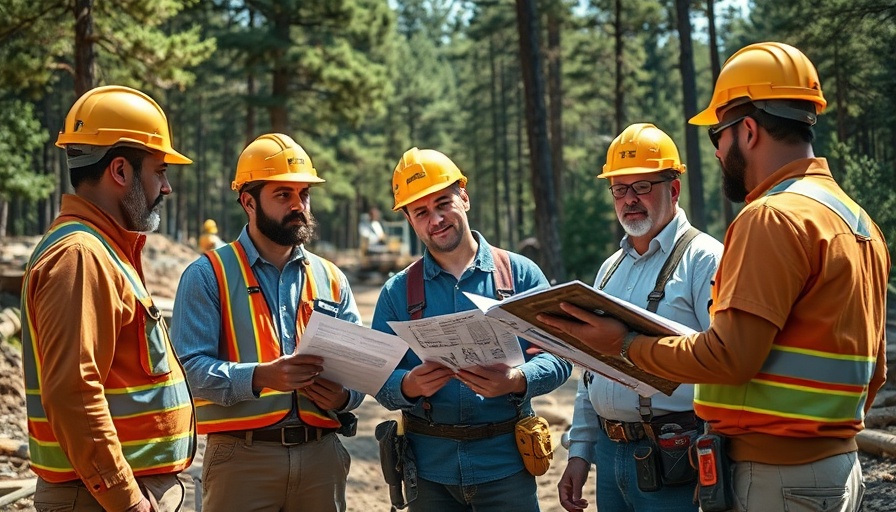
When Disasters Strike: Construction's Role in Recovery
The aftermath of a natural disaster is not just a moment of heartache; it’s a pivotal opportunity for strength and resilience. Events such as hurricanes, floods, or wildfires leave behind devastating impacts, which lead to a variety of recovery efforts. The Army Corps of Engineers (ACE) frequently coordinates with private construction firms to tackle the challenges of rebuilding, relying on their expertise in project efficiency, cost management, and sustainable building practices to initiate the restoration process.
Building a Partnership: Army Corps and ENR’s Role
This partnership is essential not only for immediate recovery but also sets the stage for future innovations in disaster response. The Engineering News-Record (ENR) highlights the importance of these interactions, detailing how construction firms leverage lessons learned from past events to improve techniques and enhance operational effectiveness. With the integration of smart technologies and sustainable materials, the ACE and commercial construction entities are increasingly capable of minimizing the future impact of similar disasters.
Integrating Technology into Recovery Efforts
One key theme emerging in the reconstruction narrative is the role of technology. Innovations in automation and advanced materials are revolutionizing construction methods. For instance, 3D printing and modular building techniques can significantly reduce construction time and waste—important factors when communities are trying to recover quickly from crisis situations. As systems are developed to impact the efficiency of project delivery, it opens doors to a future where technology not only helps in recovery but also enhances the sustainability of rebuilt environments.
Looking Ahead: The Future of Disaster Recovery
The rebuilding process offers an unprecedented opportunity to rethink urban spaces. Recovery plans can incorporate designs that prioritize health, wellness, and safety—addressing not only the structural integrity of buildings but also the psychological and social needs of the community. Strategic development can mean the difference between merely returning to normal and creating a resilient and adaptable environment for future challenges.
Lessons Learned: A Path for Improvement
As we engage in the post-disaster phase, it’s crucial to reflect on lessons learned from earlier engagements. Each disaster reveals unique challenges, and the collaboration between the Army Corps and construction firms must adapt continually. The detailed assessments that follow such events serve as a rich resource for industry professionals, ensuring that they are better prepared for future emergencies. Ultimately, embracing these insights can lead to improved protocols and bid processes, ensuring that reconstruction efforts not only restore but enhance community resilience.
Understanding the dynamics between the Army Corps and commercial construction companies in the aftermath of disasters provides a valuable blueprint for future strategies in handling similar circumstances. As clients and stakeholders of the construction industry, it is essential to remain informed about these partnerships and the innovations they emerge from to ensure quality outcomes and effective project management.
 Add Row
Add Row  Add
Add 




Write A Comment